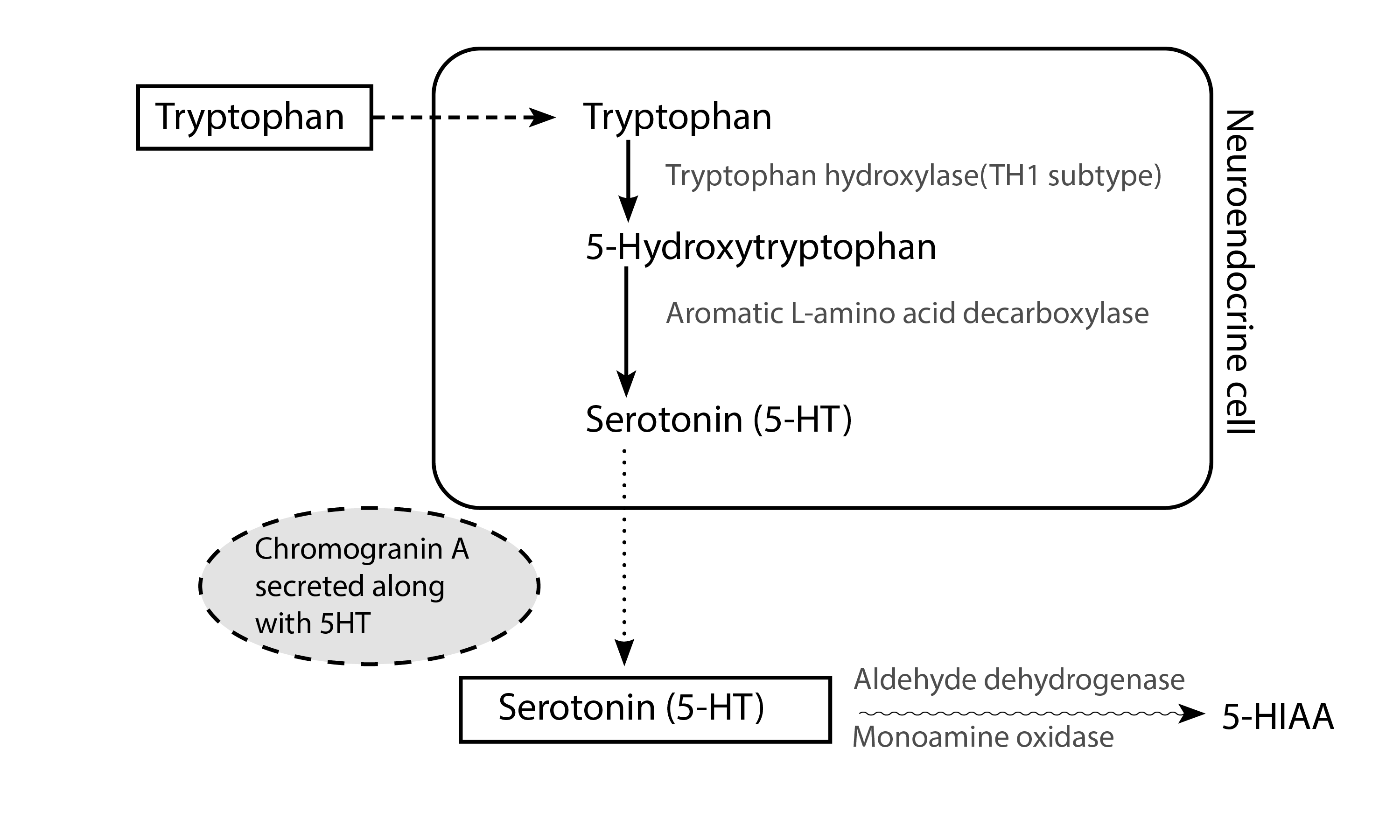Carcinoid heart disease(CHD), has a prevalence rate ranging from 11-70% [1]. Patients can present with right-sided murmurs (tricuspid and pulmonary valves), peripheral edema, ascites, and other signs of right-sided heart failure[2].
Carcinoid disease of the Heart
The most cited pathophysiologic mechanism happens to be a serotoninergic-mediated process. The binding of serotonin to ubiquitous 5-HT2B receptors in the heart explains the clinical manifestations of CHD[1]. Serotonin and other vasoactive amines stimulate 5-HT2B receptors present on the surface of myofibroblasts.
This leads to fibrosis and deposition of myxomatous substances in the endocardium. Telotristat, a novel tryptophan hydroxylase enzyme inhibitor, retarded CHD in two patients enrolled in the landmark TELESTAR (Telotristat Etiprate for Somatostatin Analogue Not Adequately Controlled Carcinoid Syndrome) phase III trial, further affirming the role of serotonin in this condition[1].
Biosynthesis of serotonin by neuroendocrine cells

Fig. 1 Schematic diagram of the biosynthesis of serotonin. Tryptophan hydroxylase 1 (TH-1) is the rate-limiting enzyme in serotonin synthesis by neuroendocrine tumors and is expressed in various tissues, including the gastrointestinal tract, spleen, thymus, and pineal glands[3]. Tryptophan is initially transported into the neuroendocrine cell (dashed arrow). Tryptophan is then converted into 5-hydroxytryptophan by tryptophan hydroxylase-1 enzyme [1, 4]. The conversion of 5-hydroxytryptophan into serotonin (5-hydroxytryptamine, 5-HT) occurs in an intermediate decarboxylation step, which requires aromatic L-acid decarboxylase. 5-HT is packaged along with chromogranin A (a neuroendocrine tumor marker) and is then released into circulation (dotted arrow). 5-HT undergoes metabolism via various enzymatic conversion steps, which result in the formation of 5-HIAA(an inactive metabolite)(wavy arrow)[1, 4]. (Redrawn and modified from Frazer et al. (1999) Serotonin. Basic Neurochemistry: Molecular, Cellular and Medical Aspects. 6th edition)
References
- Ito T, Lee L, Jensen RT (2018) Carcinoid syndrome: recent advances, current status, and controversies. Current Opinion in Endocrinology, Diabetes and Obesity 25:22
- Hassan SA, Banchs J, Iliescu C, Dasari A, Lopez-Mattei J, Yusuf SW (2017) Carcinoid heart disease. Heart 103:1488–1495
- Matthes S, Bader M (2018) Peripheral Serotonin Synthesis as a New Drug Target. Trends Pharmacol Sci 39:560–572
- Frazer A, Hensler JG (1999) Serotonin. Lippincott-Raven Chapter 13:6th edition
Kindly Let Us Know If This Was helpful? Thank You!


